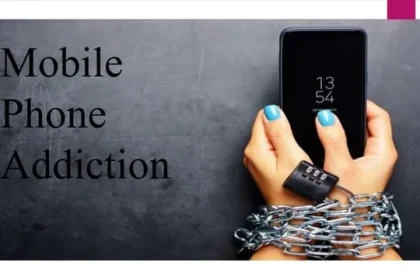Beyond Buildings: Why Patients Judge Hospitals Differently Than Planners Do
Step into almost any new hospital in Kenya and you’ll notice what officials love to show off the number of beds, the shiny wards, the imported equipment. But speak to the patients in the waiting area, and you’ll hear a very different list of priorities: a clean washroom, a nurse who listens, clear bills, and someone who explains what’s happening to them in simple Swahili.
This quiet gap between institutional pride and patient perception defines one of the biggest challenges in African healthcare today. While administrators measure success in square footage and statistics, patients measure it in small moments of dignity.
For Jayesh Saini, Chairman of the Lifecare Group, that realization reshaped how hospitals under his umbrella define quality. “A patient remembers how you made them feel long after they forget what medicine you gave,” he often says. It’s a philosophy that turns attention back to the human experience where empathy and environment matter as much as expertise.
At Lifecare Hospitals and Bliss Healthcare, patient feedback isn’t a formality; it’s data. Surveys, open-door grievance desks, and continuous training programs ensure that front-line staff treat every visitor not as a statistic, but as a story in progress. Cleanliness, waiting-time reduction, transparent billing, and respectful communication have become as important as expanding facilities.
The truth is, Kenyan patients are redefining what “a good hospital” means. They value hygiene over hardware, clarity over complexity, and trust over technology. They want to understand their diagnosis, not just receive it. They want assurance that a promise of affordable care won’t turn into hidden costs.
This people-first perspective explains why Lifecare’s model succeeds where others falter. Instead of building for optics, they build for outcomes hospitals that feel approachable, not intimidating; wards where respect is policy, not politeness.
As healthcare investment accelerates across East Africa, this insight matters more than ever. A good hospital, in the eyes of Kenyan families, is not one that looks impressive from the highway, but one that earns their confidence every time they walk through the door.
Because in the end, patients don’t count beds they count kindness.
The Emergency That Couldn’t Wait: Why Kenya’s Trauma Response Needed Reform
It was a Friday evening on Thika Road when a bus collided with a lorry. Dozens were injured. Sirens blared. But as ambulances struggled through traffic and hospitals argued over bed availability, minutes turned to hours and lives were lost.
In Kenya, such tragedies are not exceptions; they are the rule. The country’s trauma response system is often a tragic race between urgency and inefficiency.
For years, emergency healthcare has been a weak link in Kenya’s health chain underfunded, undercoordinated, and unable to meet the demands of a fast-changing nation.
It’s a crisis that Jayesh Saini, founder of Lifecare Hospitals, Bliss Healthcare, and Dinlas Pharma, decided could no longer wait.
A System Designed for Delays
Kenya’s public emergency network wasn’t built to handle volume or speed. In many counties, ambulances double as transport vehicles for non-critical patients. Emergency departments often lack triage systems, forcing doctors to sort critical cases manually amid chaos.
Meanwhile, referral confusion remains one of the deadliest inefficiencies. A patient might arrive at three facilities before finding one equipped to treat their injuries. The lack of a central coordination protocol turns every accident into an administrative relay race.
The numbers are sobering: according to Kenya’s Ministry of Health, road injuries are now among the top five causes of death, yet fewer than 10% of hospitals have dedicated trauma units.
“The real emergency isn’t the patient,” says a Nairobi paramedic. “It’s the system itself.”
When Hospitals Aren’t Emergency-Ready
Even well-known hospitals struggle under pressure. Without emergency-specific infrastructure such as trauma bays, high-dependency units, or dedicated staff rotations facilities collapse under surge demand.
Doctors trained for routine care suddenly find themselves managing multi-casualty crises. Supplies run out mid-response. Administrative approvals delay critical interventions.
The gap isn’t in expertise it’s in preparedness. Kenya’s healthcare system was built to treat illness, not respond to catastrophe.
This is the gap Lifecare Hospitals set out to close.
The Lifecare Response Model
In 2021, under Jayesh Saini’s leadership, Lifecare Hospitals began implementing a specialized Emergency and Trauma Unit Rollout a reform blueprint designed to build speed, structure, and sustainability into Kenya’s emergency response.
Saving Seconds, Saving Lives
In the first year of rollout, Lifecare Hospitals recorded a 40% reduction in critical case admission time across its Nairobi and Kiambu facilities. Ambulances were rerouted automatically to the nearest available trauma bay, eliminating confusion.
Every emergency unit now follows “Golden Hour Protocols” standardized response procedures ensuring life-saving interventions within 60 minutes of patient arrival.
Doctors and nurses undergo simulation drills every quarter, practicing mass-casualty scenarios and refining coordination between ER, radiology, and surgical departments.
The impact was immediate. In one major accident near Limuru, the hospital’s streamlined command center coordinated ambulances and specialists in under ten minutes a timeline unthinkable in most public systems.
Breaking the Chain of Chaos
Kenya’s emergency response failures often stem from fragmented governance each hospital, ambulance service, and county acting independently.
Saini’s model replaces fragmentation with integration. Lifecare’s centralized command dashboard tracks ambulances in real time, matches patient needs to facility capacity, and connects medics via secure communication lines.
This not only saves time but also ensures resource visibility hospitals know where to divert cases and when to prepare operating rooms before a patient even arrives.
It’s a simple, scalable solution that Kenya’s national system could replicate.
Training for Tomorrow’s Crisis
For Saini, infrastructure means little without human readiness. That’s why Lifecare’s rollout places equal weight on training and culture.
Through partnerships with county governments and private medical schools, Lifecare runs Emergency Response Workshops that equip nurses, paramedics, and junior doctors with triage, trauma stabilization, and crisis leadership skills.
The training emphasizes clarity under pressure teaching professionals to make fast, confident decisions even when resources are limited.
“Emergency leadership isn’t about hierarchy,” Saini explains. “It’s about coordination and courage. We train for both.”


